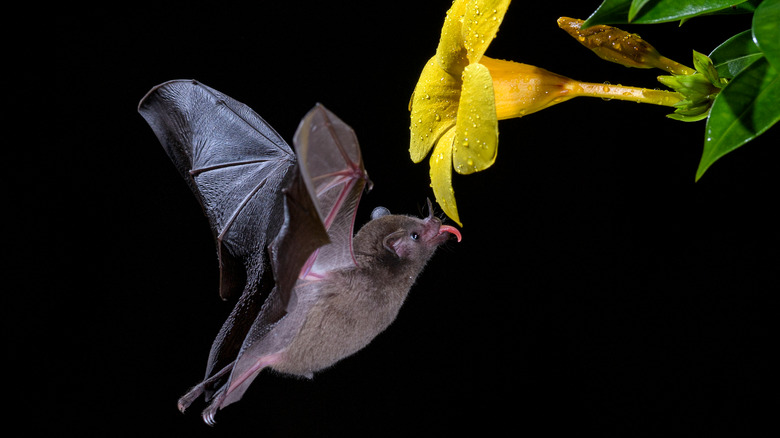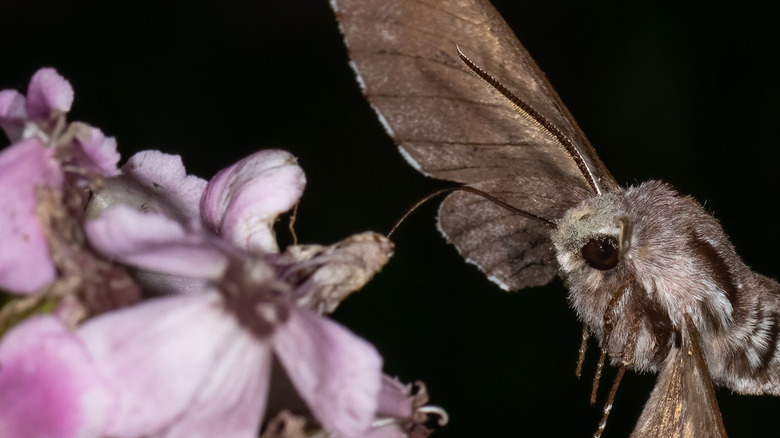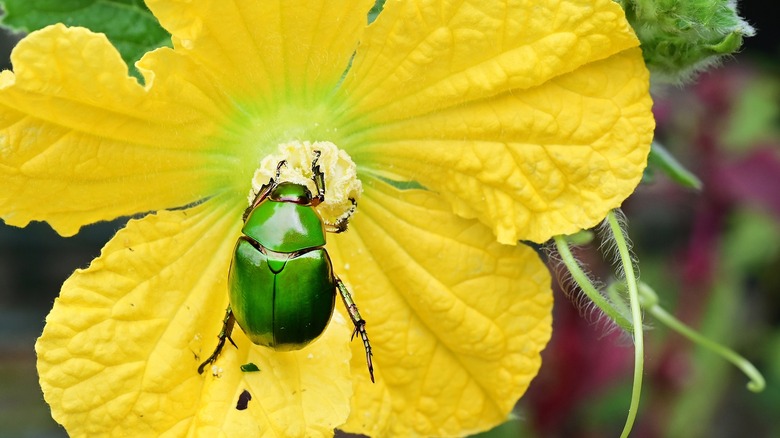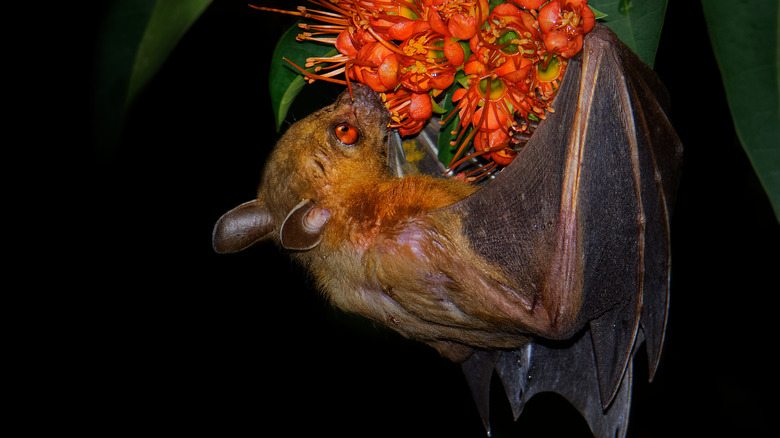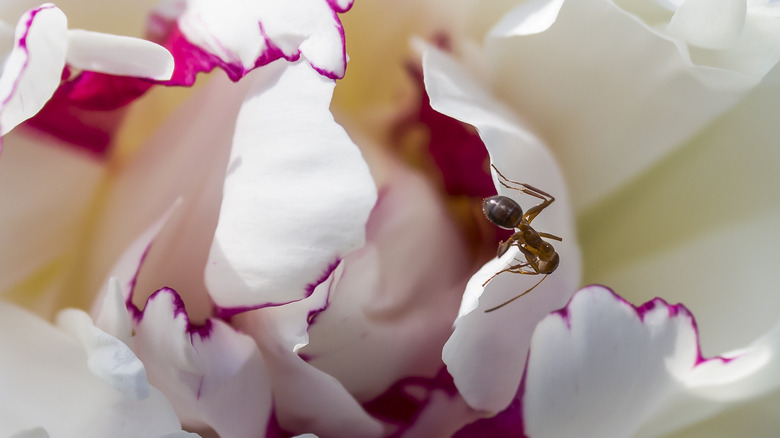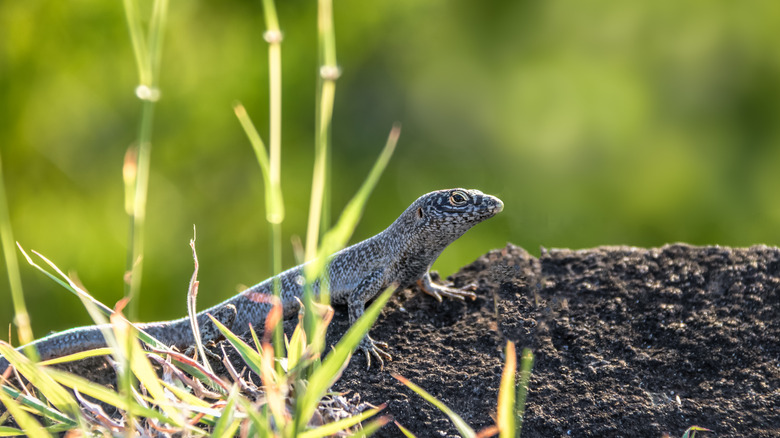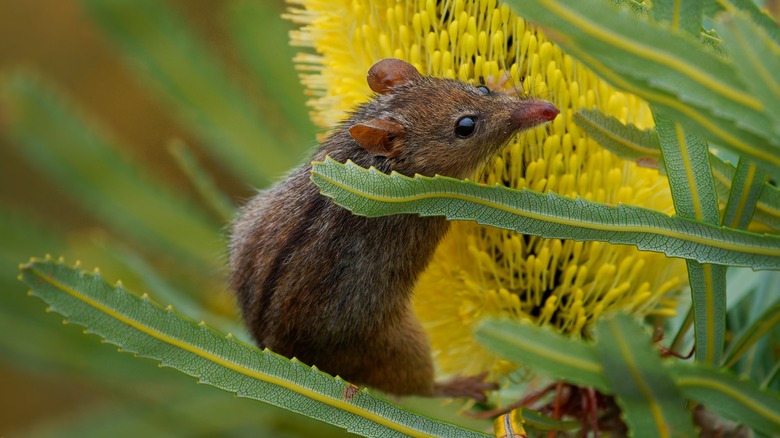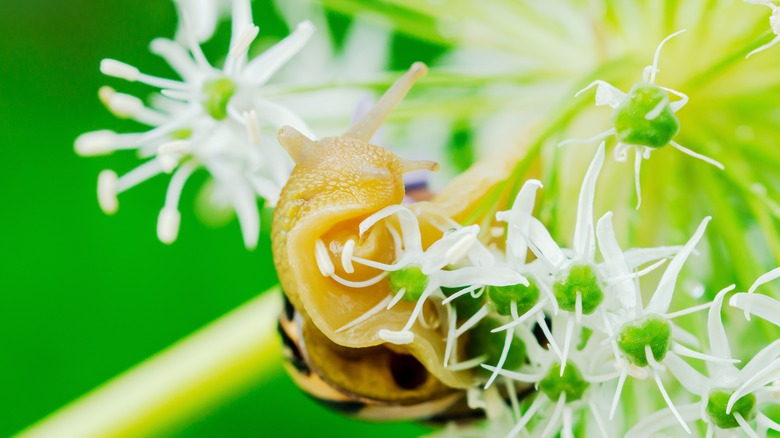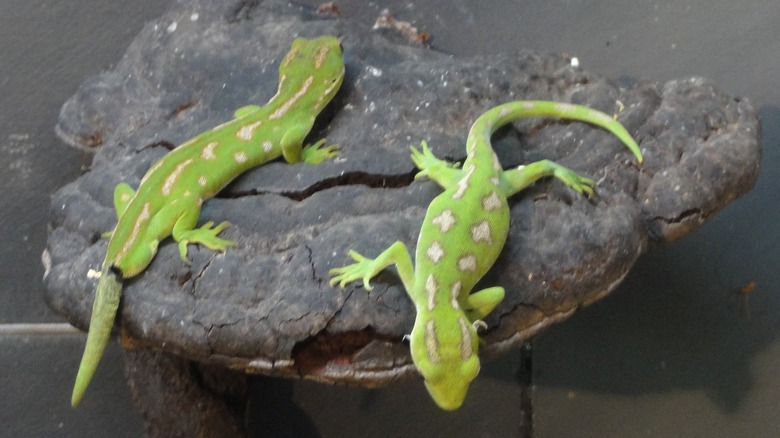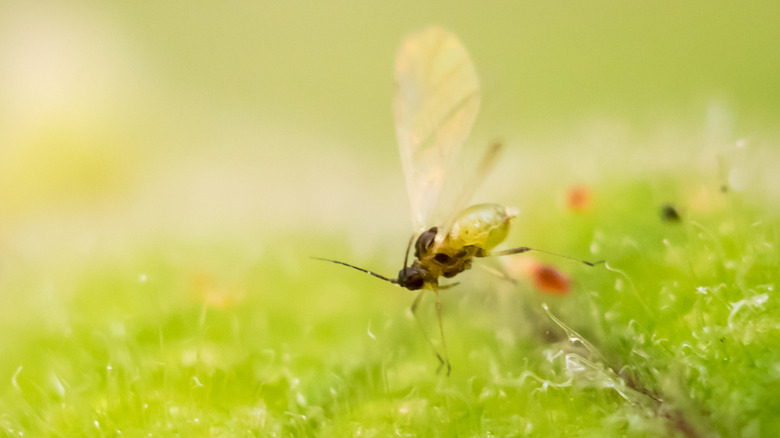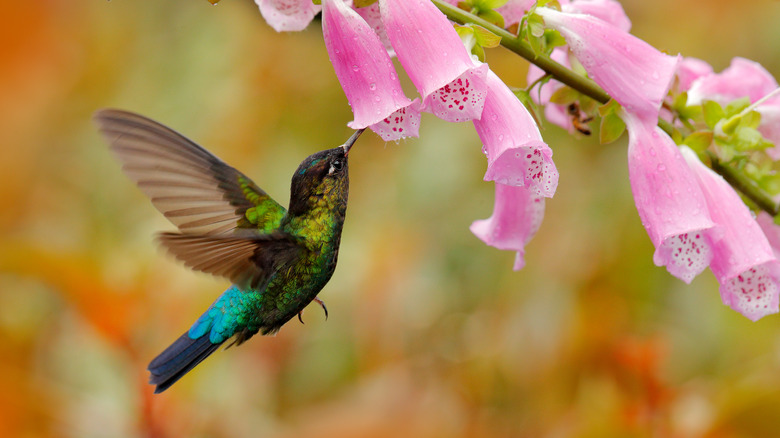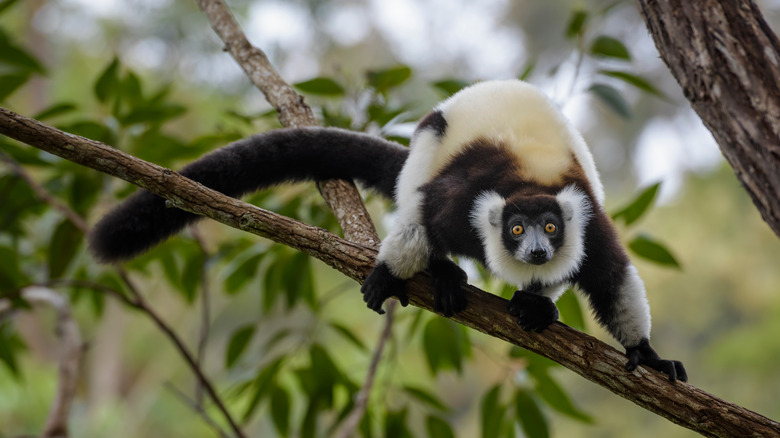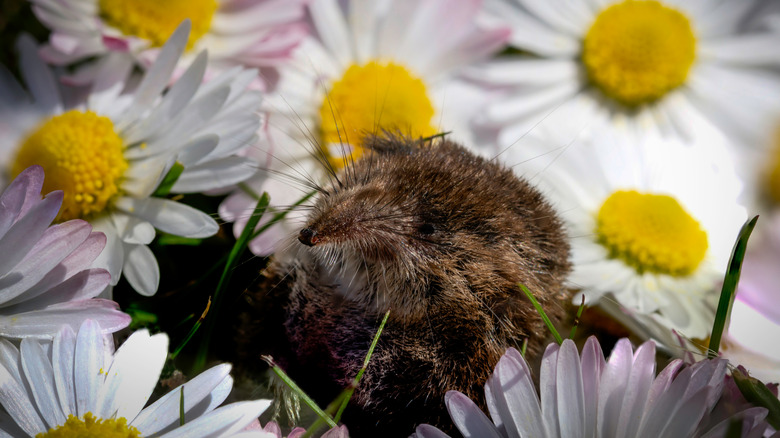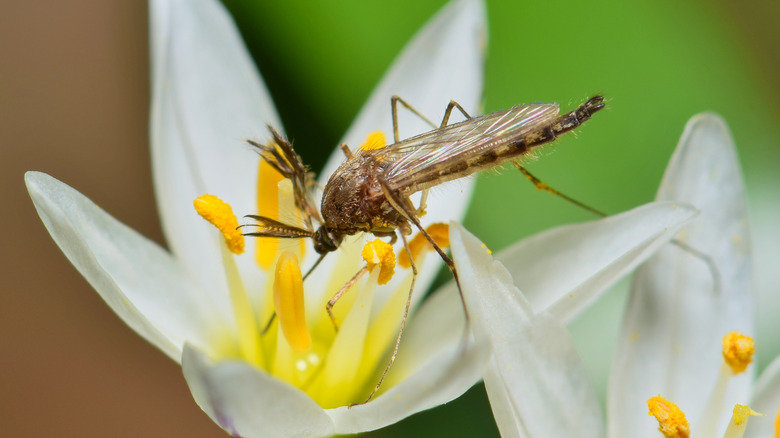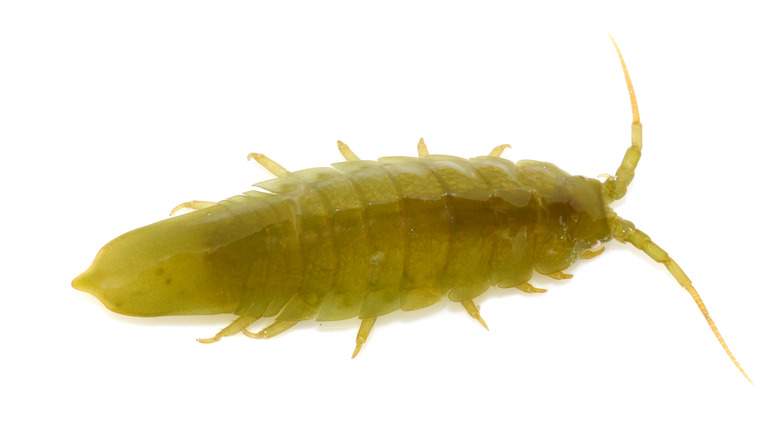14 Creatures You Didn't Realize Were Pollinators
When the warm weather comes and flowers start to bloom, gardens are suddenly full of buzzing bees and colorful butterflies flitting from flower to flower, drinking nectar and collecting pollen. While this helps them to survive and feed their young, it also helps the plants to reproduce. When pollinators collect what they need from flowers, they also get covered in plant pollen, which they carry to the next flower they visit. This fertilizes the plants, helping them to reproduce in the form of seeds and fruits.
People are starting to recognize how important pollinators are, planting gardens specifically to appeal to them, and cutting back on the use of pesticides that can harm them — but there is still a lot to learn about pollinators.
While they are the most famous, bees and butterflies are not the only species that can pollinate plants: Everywhere that plants grow, there are creatures that help them reproduce. And just like plants, which have evolved to bloom in all kinds of colorful and fragrant ways to attract pollinators, the animals which pollinate them come in all shapes and sizes.
Moths
Most people know that butterflies are pollinators, but what about their mostly nocturnal cousins, moths? While it might seem like the best time for collecting sweet nectar from flowers would be in the daytime, not all flowers close their petals after dark. In fact, some flowers have specifically evolved to look their best when the sun goes down to attract these prolific nighttime pollinators.
Moth pollination historically hasn't been studied as extensively as butterfly and bee pollination, but as noted by the Xerces Society, research has increasingly shown how important moths truly are to their ecosystems. Their secret? Being fluffy. The characteristic fuzziness of moth bodies is ideal for picking up pollen.
While some moths visit many types of flowers, others have a unique relationship with a single type of plant throughout their entire lives. The yucca moth always hatches as a caterpillar from eggs hidden inside yucca flowers. The baby caterpillars will only eat yucca seeds, so the adult yucca moth also deposits pollen in all the flowers that she lays her eggs in, guaranteeing that her children will have something to eat. These moths are the only species that pollinate the yucca flower — neither species could survive without the other.
Beetles
Beetles may seem like humble creatures, but they may be the most successful on the planet. There are more than 300,000 species of beetle, more types than any other animal. These familiar insects are known for having a variety of specialties, from aphid-eating ladybugs to dung-rolling scarab beetles. And some of these industrious bugs are also great pollinators — as long as the plant makes enough pollen to share with the beetle.
In general, beetles visiting flowers are there to eat the pollen. For there to be any left for the beetle to carry to the next bloom, plants that have evolved to attract beetles for pollination must make a lot of pollen. They also have to be hardy if they want to survive a visit from a hungry beetle. Plants primarily pollinated by beetles often have thick, almost leathery leaves and flower petals. The beetles might be there to eat pollen, but they won't hesitate to snack on the plant's leaves and flowers while they're there.
Bats
The most famous pollinators, bees and butterflies, can be seen flitting from flower to flower, drinking nectar, and getting covered in pollen in the process, but overnight there are larger flying pollinators at work: bats. It may seem unusual, but by merely following their natural instincts, bats play an important role in helping humans have food to eat.
In many ways, bats are the ideal pollen carriers. Pollen easily gets stuck to their fur while they feed on nectar, and their large size means they can carry far more than their tiny insect counterparts. They can also fly much further, while carrying pollen on their way to their next meal. Many plants are exclusively pollinated by bats — and some of those are ones that humans need. Many crops that humans grow, like mangoes, peaches, bananas, and agave, are pollinated extensively or exclusively by bats. Even bats that prefer insects to nectar help farmers by eating pests.
Unfortunately, the use of pesticides and the destruction of their natural habitats put bats at risk. Organizations, like Bat Conservation International, work to protect bats from extinction, both to preserve these fascinating animals and keep global agriculture in good condition.
Ants
During warm weather, it can seem like ants are everywhere. In a way, they definitely are: More than 15,000 types of ants can be found across the planet. One reason that they have thrived in so many diverse environments is that they are excellent foragers with extremely varied diets. And it so happens that one of their favorite foods is nectar harvested from flowers, which means that they often crawl from flower to flower, potentially pollinating the plants along the way.
Despite the number of flowers they visit, ants have a reputation for not being particularly good at pollination. One reason for this is their size: They are so small that, when collecting nectar, they don't always brush against the flower stamens, which produce pollen. Also, unlike bees, their bodies aren't fluffy, so less pollen sticks to them. They are also fastidious groomers, so there is a risk that if any pollen does manage to stick, they'll clean it off before it reaches another flower.
Despite these drawbacks, ants are able to pollinate flowers, particularly very small ones which grow close to the ground. As described by a 2020 case study published in Annals of Botany, there is evidence that, for some plants, ants are just as successful at pollinating as bees. Even if ants are not as effective at pollination as other insects, they do assist plants by carrying seeds far away, allowing the next generation of plants to sprout in new territory.
Noronha skink
Lizards are among the least likely candidates for pollinators, but a few enterprising species have been observed pollinating flowers. One of these is the little Noronha skink.
These small skinks are found only on islands off the coast of Brazil, but there they thrive. One reason they are so successful is almost certainly their varied diet. As described in an article published in Biota Neotropica, they will eat almost anything, including human garbage, eggs, other lizards, plants, rotting meat, and, most surprisingly, nectar from flowers.
While they have a highly varied diet for most of the year, food becomes more scarce in the dry season. Luckily for them, mulungu trees flower in the dry season, and their blooms are full of sweet nectar. Noronha skinks have been observed climbing mulungu trees to drink nectar from the blossoms — when they crawled out again, they often had pollen all over their bodies, sticking to their scales. The pollen-covered skinks then traveled to other trees, inadvertently pollinating them.
Honey Possums
The honey possum is a tiny, furry creature that looks like a mouse with a long nose. Not counting their long tails, they range from 2 1⁄2 to 4 inches long. These tiny marsupials only live in select parts of Australia, but there they are a vital part of the ecosystem: While they might not look like it, they are pollinators.
Honey possums don't actually eat honey. Instead, they live on an exclusive diet of nectar and pollen. According to the Annals of the Missouri Botanical Garden, it is believed that honey possums are unique in this way, holding the prestigious title of the only non-flying mammal to only eat from flowers. While gathering and eating the sticky nectar from flowers, pollen sticks to their fluffy faces, particularly their long pointy noses. Despite their tiny size, a study published in the Australian Journal of Zoology recorded honey possums traveling more than 1,500 yards over the course of nine days, carrying with them five different types of pollen.
Slugs and snails
Slugs and snails are often considered garden pests due to their insatiable appetite for plant leaves and even flowers. However, their hungry nature can also make them a vital resource to many plants.
Slugs and snails can actually help plants by using them as a food source. For instance, when they eat plant seeds and spores, they often pass through the slug's system unharmed. This means that a seed eaten by a slug in one place may be carried inside its body and defecated out in new territory, and hungry slugs and snails can also become effective pollinators. Slug and snail pollination, sometimes called malacophily, is a rarely studied phenomenon, and as described by the Finger Lakes Land Trust, there is still a lot for scientists to learn about these tiny, sticky pollinators. One thing known for sure is that slugs and snails visit flowers to drink the nectar, pollen then sticks to them and is transported to the next blooming flower that they visit. While they aren't widely known to be pollinators, some species have evolved specifically to eat nectar.
While the best-known pollinators, like bees and butterflies, only come out when the weather is warm and dry, snails and slugs do their best pollinating on rainy nights. Research has shown that when the conditions are right, slugs are just as good at helping the life cycle of flowering plants as any other pollinator.
Elegant Gecko
The elegant gecko is a fascinating little lizard that can be found all over the planet, including in the trees of New Zealand. These are bright green, sometimes with pale pink markings on their backs, and a startlingly blue mouth and black tongue. Scrappy males are often covered in scars from their battles for dominance during breeding times. Typically, they eat insects, but they also have a sweet tooth: They can be found eating fruits, licking the honeydew off of bugs, and using their dark tongues to lap up nectar from blooming flowers.
As described by the New Zealand Journal of Botany, these little geckos have long been observed visiting flowers to drink nectar — and getting coated in pollen in the process. This pollen has staying power, and can remain attached to gecko scales for more than 12 hours — more than enough time for them to visit other flowers.
[Featured image by Andy king50 via Wikimedia Commons | Cropped and scaled | CC BY-SA 3.0]
Fungus gnats
Fungus gnats are absolutely tiny. While many know them as the infinitesimal flies that suddenly take over the house if you overwater your plants, they can also be highly successful pollinators.
While it might seem like fungus gnats would be too small to collect pollen and carry it from flower to flower, it seems that for some plants, they are actually ideally suited to the task. In a study published in Annals of Botany in 2018, it was discovered that fungus gnats may be more frequent and more successful pollinators than was previously known.
Some flowers' stamens are difficult for pollinators to access, but that's where the small size of the fungus gnat becomes an advantage. Even in the most inhospitable of flowers, there's room for a fungus gnat to crawl in and get completely covered in pollen. As described by Scientific American, it is believed that the cast iron plant actually evolved specifically to appeal to the fungus gnat, looking and smelling like fungus.
Hummingbirds
After bees and butterflies, hummingbirds are probably the most beloved pollinators. These feisty little birds are always on the move, zipping from flower to flower and moving almost nonstop. As tiny as they are, their hearts can beat more than 1000 times per minute when they're in motion, and when they migrate, some will fly up to 22 hours without a break. The source of their seemingly boundless energy? Nectar.
Hummingbirds can eat up to twice their own body weight in nectar every day, so for a plant to be worth a visit from a hummingbird, it has to have a lot of nectar in every bloom. This nectar is often found in deep bell or tube-shaped flowers, but that is no problem for a hummingbird: Their long beaks can be dipped into even the deepest flowers.
If a plant can produce enough nectar to attract hummingbirds, it has a good chance of being pollinated by them. As described by the National Park Service, hummingbirds have evolved to be the perfect pollinators. And in their relentless quest for nectar, hummingbirds will often visit every viable flower a plant, shrub, or tree has to offer. This gives them ample time to get themselves covered in pollen, as well as all the energy they need to transport it to new blooms.
Lemurs
When people talk about pollinators, they are usually referring to small flying insects whose bodies have specifically evolved to access the nectar and pollen found inside flowers. And when picturing pollinators, few imagine a fuzzy face, big eyes, a long tail, and opposable thumbs, but many types of lemurs are pollinators and vital to their ecosystems.
Ten different varieties of lemur are known to snack on nectar when their favorite flowers are in season, and it's believed that they have evolved to get better at accessing this tasty floral treat. Lemurs who specialize in eating nectar have long pointy noses for sticking into flowers, and even longer tongues for lapping up the nectar inside. Fortunately for the plants, they also have particularly fluffy cheeks and chins, which get coated in pollen during the process. One of these lemurs is the black-and-white ruffed lemur, which is believed to be the largest pollinating creature in the animal kingdom.
One of the greatest threats to lemurs, many of which are endangered, is the destruction of their habitats. Because lemurs and the trees and plants in their ecosystems have evolved together, it would be nearly impossible for one to survive without the other.
Mice, rats, and shrews
While it isn't often talked about, rodents all over the world pollinate flowers. From tiny long-nosed elephant shrews to common rats, rodents prove that pollinators come in all shapes and sizes — and not all of them can fly.
While the South African elephant shrew primarily eats insects, it has also been observed using its long tongue to collect plant nectar. As described in a 2011 study published in Flora, their furry noses are perfect for getting coated in pollen. While ordinary mice have also been observed drinking nectar, according to Nature Proceedings, Chinese orchids are frequently pollinated by ordinary mice hoping to eat the orchid's center petal, and happen to get their faces covered in a dusting of pollen in the process.
While most rodents prefer to visit flowers on the ground, common brown rats have also been recorded pollinating in trees. As reported by The New York Times, they are believed to be among the most common pollinators of feijoa blooms, which produce a popular fruit. Like the mice, it is believed that the rats are attracted to the blooms to eat the flower petals — but end up helping the plant anyway.
Mosquitoes
Mosquitoes are probably among the least popular of all of Earth's insects. Their bites can leave more than itchy red welts — they can spread devastating illnesses like malaria, yellow fever, and Zika. In fact, it has been estimated that in the last 200,000 years, 52 billion humans have died because of mosquitoes — almost 50% of every human to have ever lived. Could there be any upside to sharing the planet with our ancient, bloodsucking enemies?
Contrary to popular belief, mosquitoes don't exclusively drink blood. In fact, the primary food source for mosquitoes is actually nectar from flowers. In the marshy, wet environments where mosquitoes live and breed, they frequently pollinate small flowers that bloom overnight. While they may not have fuzzy bodies for pollen to stick to, their abdomens, faces, and even eyes can become coated in pollen.
As described by Smithsonian, there is still a lot to learn about the role mosquitoes play as pollinators. Compared to bees and butterflies, they have rarely been studied as pollinators, but at night, researchers have found huge numbers of mosquitoes buzzing around flowers. While some species of mosquito can be deadly, their role in the world's ecosystems is only just starting to be understood.
Crustaceans
Idotea balthica are tiny crustaceans that look like tiny brown pill bugs crawling around underwater. These little critters may not look like much, but a study about them published in Science in 2022 changes what scientists have long believed about the history of pollination.
It has long been believed that flowering plants and flying insect pollinators evolved around the same time, around 66 to 100 million years ago. As described by Scientific American, that timeline was complicated in 2009 by the discovery of even more ancient flies, which are believed to have been able to drink nectar from plants that hadn't yet evolved flowers. However, recent discoveries suggest that a kind of pollination may have evolved staggeringly farther back in time, and in the most unlikely of places: the sea.
The isopod Idotea balthica lives among red algae, and it has been shown that when they move from male to female algae, they carry the algae's spermatia on their bodies like a bee carries pollen. This has been proven to increase the chance that the red algae will be fertilized: In other words, they pollinate underwater. In an interview with New Scientist about the study, biologist Myriam Valero explained that it has long been believed that animals started helping to fertilize plants about 450 million years ago, when they first appeared on land. Red algae, on the other hand, are more than 800 million years old, which means that underwater pollination may have been going on for longer than ever previously imagined.
